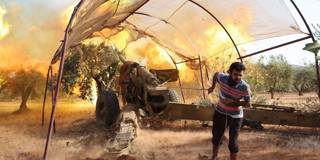As much as the United States would like to extricate itself from the Middle East, that simply is not a realistic option. While the region has experienced a rapid geopolitical change in response to US disengagement, it remains maddeningly complex and fraught with potentially systemic risks that America cannot afford to ignore.
WASHINGTON, DC – Like some modern-day Gulliver that is tied up by powers large and small in a region that it needs to understand better, the United States confronts a Middle East in a period of extraordinary change. But it does so with fewer illusions and a clear determination to reorder its priorities in a region that has unduly preoccupied its attention for the past several decades. The growing importance of the Indo-Pacific, an increasingly aggressive Russia, independence from Arab hydrocarbons, and a sense – following the failed trillion-dollar social science experiments in Afghanistan and Iraq – that most of what ails the region is beyond America’s capacity to repair have forced a welcome downgrading of the Middle East in US foreign policy. And when a great power recalibrates, smaller powers will readjust in ways that both advance and harm its interests.
Five features define the region’s new political landscape. They have been emerging for quite some time, and correctly reading the changed terrain is vital if the US is to maximize the chances of protecting its interests in a region where, more often than not, American ideas go to die.
The Arab Winter

WASHINGTON, DC – Like some modern-day Gulliver that is tied up by powers large and small in a region that it needs to understand better, the United States confronts a Middle East in a period of extraordinary change. But it does so with fewer illusions and a clear determination to reorder its priorities in a region that has unduly preoccupied its attention for the past several decades. The growing importance of the Indo-Pacific, an increasingly aggressive Russia, independence from Arab hydrocarbons, and a sense – following the failed trillion-dollar social science experiments in Afghanistan and Iraq – that most of what ails the region is beyond America’s capacity to repair have forced a welcome downgrading of the Middle East in US foreign policy. And when a great power recalibrates, smaller powers will readjust in ways that both advance and harm its interests.
Five features define the region’s new political landscape. They have been emerging for quite some time, and correctly reading the changed terrain is vital if the US is to maximize the chances of protecting its interests in a region where, more often than not, American ideas go to die.
The Arab Winter